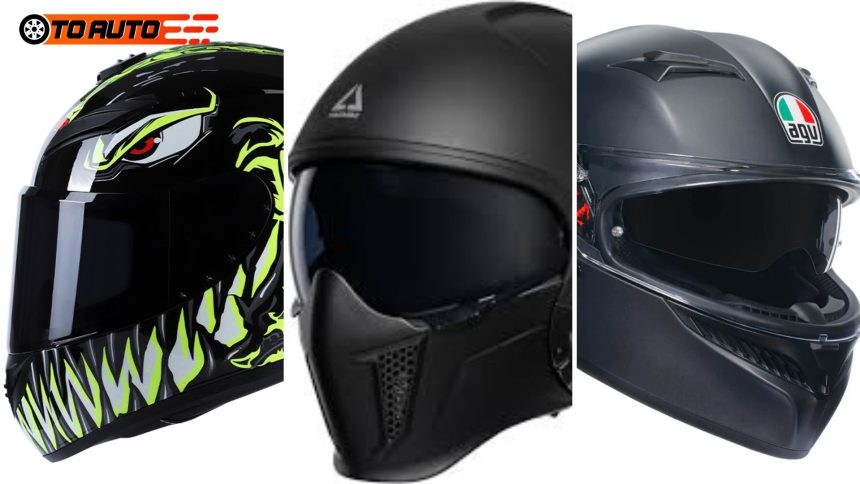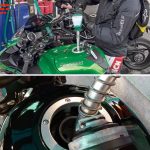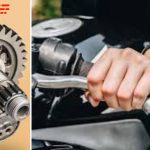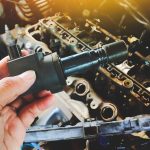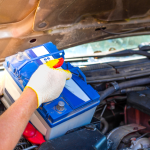Choosing the right motorcycle helmet is crucial for every rider. A helmet not only protects your head during accidents but also enhances your riding experience. With numerous options available, finding the perfect helmet can be overwhelming. This guide aims to simplify the process and help you choose the best motorcycle helmet for your needs.
1. Understanding Motorcycle Helmet Types
Full-Face Helmets
Full-face helmets are the most protective type of motorcycle helmet. They cover your entire head and face, providing complete protection against impacts, wind, and debris. The chin bar is an essential feature, as it protects your jaw in the event of an accident. Full-face helmets are suitable for all types of riding, from city commuting to high-speed racing.
These helmets often come with advanced features such as ventilation systems, noise reduction, and anti-fog visors. They offer the best protection but can feel slightly restrictive for some riders. If you prioritize safety and comfort, a full-face motorcycle helmet is an excellent choice.
Modular Helmets
Modular helmets, also known as flip-up helmets, combine the features of full-face and open-face helmets. The chin bar and visor can be flipped up, allowing for more ventilation and easy communication. This type of motorcycle helmet is popular among touring riders who need the flexibility of an open-face helmet without compromising on safety.
Modular helmets are generally heavier than full-face helmets due to the additional hinge mechanisms. They offer versatility but may not provide the same level of protection as a full-face helmet during a severe impact. Consider a modular motorcycle helmet if you want the convenience of a flip-up design with decent protection.
Read More: Motorcycle Fuel Efficiency Tips: Maximizing Your Motorcycle’s Mileage
2. Helmet Fit and Comfort
Importance of Proper Fit
A properly fitting motorcycle helmet is crucial for both safety and comfort. A helmet that is too loose or too tight can be distracting and may not provide adequate protection during an accident. To ensure a proper fit, measure the circumference of your head using a flexible tape measure. Compare your measurement with the helmet size chart provided by the manufacturer.
When trying on a helmet, make sure it sits snugly on your head without causing discomfort. The helmet should not move or shift when you shake your head. A well-fitting motorcycle helmet should feel secure but not overly tight, with no pressure points or gaps.
Comfort Features
Comfort features play a significant role in choosing the right motorcycle helmet. Look for helmets with removable and washable liners, as they help maintain hygiene and comfort during long rides. Adequate ventilation is essential to prevent heat buildup and ensure a comfortable riding experience, especially during hot weather.
Noise reduction is another important factor to consider, as excessive noise can be distracting and tiring. Some helmets come with built-in noise-canceling features or earplugs to reduce wind noise. Additionally, consider the weight of the helmet, as a lighter helmet will be more comfortable during long rides.
3. Safety Standards and Certifications
DOT, ECE, and SNELL Certifications
Safety certifications are an essential aspect of choosing a motorcycle helmet. Helmets must meet certain safety standards to ensure they provide adequate protection during an accident. In the United States, the Department of Transportation (DOT) sets the minimum safety standards for helmets. A DOT-certified helmet meets these basic safety requirements.
The Economic Commission for Europe (ECE) sets safety standards for helmets in Europe. ECE-certified helmets are tested for impact resistance, retention, and field of vision. SNELL certification is a voluntary standard that tests helmets for higher safety standards than DOT or ECE. Look for these certifications when choosing a motorcycle helmet to ensure it meets the necessary safety requirements.
Testing and Impact Protection
Helmets are subjected to various tests to evaluate their impact protection capabilities. These tests simulate different types of accidents and measure the helmet’s ability to absorb and distribute impact forces. A high-quality motorcycle helmet will have a sturdy outer shell, a shock-absorbing liner, and a comfortable inner padding.
In addition to impact protection, helmets are tested for penetration resistance, chin strap strength, and visor durability. Make sure the helmet you choose has been tested and certified by a reputable safety organization. Investing in a certified and tested motorcycle helmet is crucial for your safety on the road.
4. Visor and Face Shield Features
Anti-Fog and Anti-Scratch Coatings
A clear and durable visor is an essential feature of any motorcycle helmet. Visors should provide a wide field of vision and protect your eyes from wind, debris, and UV rays. Look for visors with anti-fog and anti-scratch coatings to ensure clear visibility in all weather conditions.
Anti-fog coatings prevent the visor from fogging up, especially during cold or humid weather. This feature is essential for maintaining clear visibility and avoiding accidents. Anti-scratch coatings protect the visor from scratches and damage, ensuring it lasts longer and provides a clear view of the road ahead.
Quick-Release and Tinted Visors
Quick-release visors are a convenient feature that allows you to change the visor easily without using any tools. This feature is particularly useful if you want to switch between clear and tinted visors depending on the lighting conditions. A quick-release mechanism ensures that you can make these adjustments quickly and safely.
Tinted visors are an excellent option for riders who frequently ride in bright sunlight. They reduce glare and improve visibility, making your ride more comfortable and safer. When choosing a tinted visor, make sure it complies with local regulations regarding the use of tinted visors on public roads.
5. Additional Features and Customization
Bluetooth and Communication Systems
Modern motorcycle helmets come with a variety of additional features that enhance the riding experience. One popular feature is the integration of Bluetooth and communication systems. These systems allow riders to stay connected with other riders, listen to music, and make phone calls without removing their helmets.
Bluetooth-enabled helmets come with built-in speakers and microphones, providing a seamless and convenient communication experience. When choosing a helmet with a Bluetooth system, consider the battery life, ease of use, and compatibility with your devices. A well-integrated communication system can significantly enhance your riding experience.
Graphics and Customization Options
Personalizing your motorcycle helmet is a great way to express your style and make your helmet unique. Many helmet manufacturers offer a wide range of graphics and color options to suit different tastes. From bold and vibrant designs to subtle and classic styles, there’s something for every rider.
Some riders also choose to customize their helmets with stickers, decals, or custom paint jobs. While customization adds a personal touch, make sure it does not compromise the helmet’s safety features or visibility. A customized motorcycle helmet not only looks great but also reflects your personality and style on the road.
Conclusion
Choosing the right motorcycle helmet is an essential aspect of safe and enjoyable riding. By considering factors such as helmet type, fit, safety certifications, and additional features, you can find a helmet that meets your needs and preferences. Remember to prioritize safety and comfort when making your choice, as a well-fitting and high-quality helmet can make all the difference in your riding experience. With the right helmet, you can enjoy the freedom and thrill of riding while staying safe and protected.




